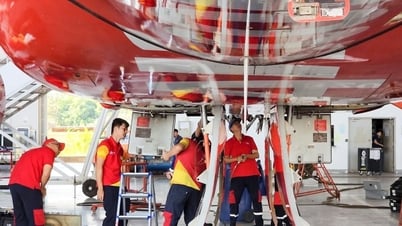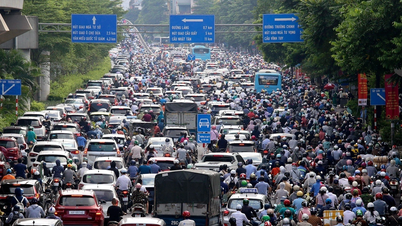According to SCMP, China's Shijian-21 and Shijian-25 satellites may have successfully connected for the first time to refuel in geostationary orbit, marking a breakthrough that the US is still trying to achieve by 2026.
According to the US space monitoring company COMSPOC, from July 2-6, optical data showed that the two satellites “appeared to have merged visually,” meaning they had conducted a multi-day docking and docking maneuver (RPO).
This is an extremely complex process, requiring high precision as two unmanned spacecraft must pair up in a microgravity environment at an altitude of more than 35,000km above the equator.
Previously, since June, these satellites have conducted close approaches many times. The first approach was recorded on June 11, when Shijian-25 began to “drift steadily toward” Shijian-21 and were only about 1 km apart on June 13, then separated 90 minutes later.
By the end of June, data from the Swiss company s2a systems showed that they had moved closer and from July 2 were almost indistinguishable on surveillance images.
Shijian-25 was launched in January 2025, carrying a mission to test “satellite refueling and life extension” technology.
Meanwhile, Shijian-21, which entered orbit in 2021 to test its ability to reduce space debris, used most of its fuel in early 2022 to pull a broken BeiDou navigation satellite into a “graveyard” orbit.
Chinese officials have made refueling and space junk removal a priority, aiming to reduce costs, extend the life of the spacecraft and reduce the risk of debris colliding. The technology is expected to use robotic arms, nets or lasers to collect and dispose of the waste.
The US is closely monitoring these tests because, in addition to civilian purposes, they could have military applications, such as disabling enemy satellites for navigation, communications and missile early warning.
Despite investing in similar technology, the US has encountered many obstacles. NASA's OSAM-1 mission was canceled in 2023 after years of delays and cost overruns.
Previously, in 2007, DARPA had succeeded with the Orbital Express project of automatic refueling, but at low orbit and with a much smaller level of complexity than geostationary orbit.
The US Space Force is currently requesting about $20 million in the 2025 budget to continue research and testing of orbital refueling, with testing expected to begin next summer./.
Source: https://www.vietnamplus.vn/ve-tinh-trung-quoc-duong-nhu-da-dat-ky-tich-tiep-nhien-lieu-tren-khong-gian-post1049484.vnp




































































































Comment (0)